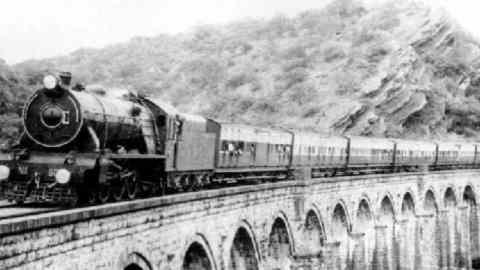Lord Dalhousie dedicated the first passenger railway train, which travelled between Bombay’s Bori Bunder station and Thane on April 16, 1853 in India, three steam locomotives, the Sahib, Sindh, and Sultan, pulled the 14-car train.
Interesting Facts of first railway train in India 1853
From Bombay to Thane, the first railway on the India ran for 21 miles. During a visit to Bhandup in 1843, Mr. George Clark, the Bombay Government’s Chief Engineer, had the idea of building a railway to connect Bombay with Thane, Kalyan, and the Thal and Bhore Ghats inclines.
The ceremonial inauguration event took place on April 16, 1853, when 14 railway coaches carrying roughly 400 visitors left Bori Bunder at 3.30 p.m. “amidst the loud applause of a great throng and the salute of 21 cannons,” according to the inaugural programme.
After 1853 On the 15th of August, 1854, the first passenger railway train went out of Howrah station, bound for Hooghly in India a distance of 24 miles. As a result, the first stretch of the East Indian Railway was opened to public traffic, marking the start of railway travel on the subcontinent’s eastern side.

Also Read: Best bus routes and numbers in Mumbai: About, Stations and Route Numbers
The Madras Railway Company opened the first line in the south on July 1, 1856. It stretched for 63 kilometres between Vyasarpadi Jeeva Nilayam (Veyasarpandy) and Walajah Road (Arcot).
On March 3, 1859, a 119-mile line was laid from Allahabad to Kanpur in the north. On October 19, 1875, the first section from Hathras Road to Mathura Cantonment was opened to traffic.
These were the humble beginnings of what would eventually grow into a nationwide network of railway lines. By 1880, the Indian Railway system had around 9000 miles of track. INDIAN RAILWAYS, the country’s principal transportation agency, is Asia’s and the world’s second-largest train network under one management.
In 1853, first-class rates from Mumbai to Thane were Re. 2 and annas 10, second-class fares were Re. 1 and anna 1, and third-class fares were annas 5 and 3 pice. The average third-class fare was around three pies per mile.
A total of 10,000 workers were employed on the project, with a total cost of 10,000 pounds spent on the railway line.
In its first year, the Mumbai-Thane railway route train carried 4,50,000 people without an accident.
The committee included Sir Jamsetjee Jeejeebhoy and Nana Shankarseth, who helped to create the idea.
The project was carried out in partnership with the East India Company and the Great Indian Peninsula (GIP) Railway Company in England.
Follow us on Instagram: Mymumbaipost